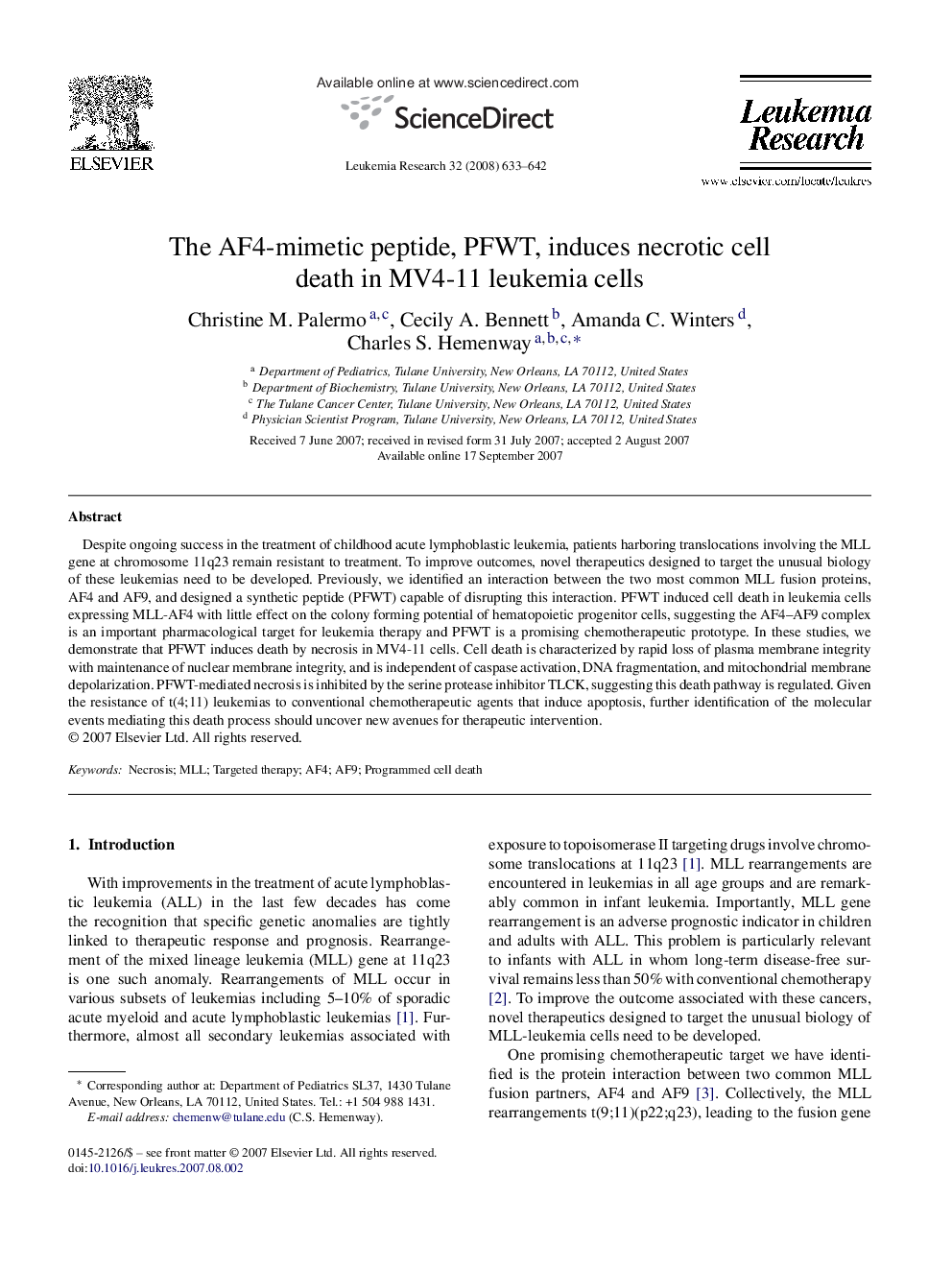| Article ID | Journal | Published Year | Pages | File Type |
|---|---|---|---|---|
| 2139286 | Leukemia Research | 2008 | 10 Pages |
Abstract
Despite ongoing success in the treatment of childhood acute lymphoblastic leukemia, patients harboring translocations involving the MLL gene at chromosome 11q23 remain resistant to treatment. To improve outcomes, novel therapeutics designed to target the unusual biology of these leukemias need to be developed. Previously, we identified an interaction between the two most common MLL fusion proteins, AF4 and AF9, and designed a synthetic peptide (PFWT) capable of disrupting this interaction. PFWT induced cell death in leukemia cells expressing MLL-AF4 with little effect on the colony forming potential of hematopoietic progenitor cells, suggesting the AF4-AF9 complex is an important pharmacological target for leukemia therapy and PFWT is a promising chemotherapeutic prototype. In these studies, we demonstrate that PFWT induces death by necrosis in MV4-11 cells. Cell death is characterized by rapid loss of plasma membrane integrity with maintenance of nuclear membrane integrity, and is independent of caspase activation, DNA fragmentation, and mitochondrial membrane depolarization. PFWT-mediated necrosis is inhibited by the serine protease inhibitor TLCK, suggesting this death pathway is regulated. Given the resistance of t(4;11) leukemias to conventional chemotherapeutic agents that induce apoptosis, further identification of the molecular events mediating this death process should uncover new avenues for therapeutic intervention.
Related Topics
Life Sciences
Biochemistry, Genetics and Molecular Biology
Cancer Research
Authors
Christine M. Palermo, Cecily A. Bennett, Amanda C. Winters, Charles S. Hemenway,
